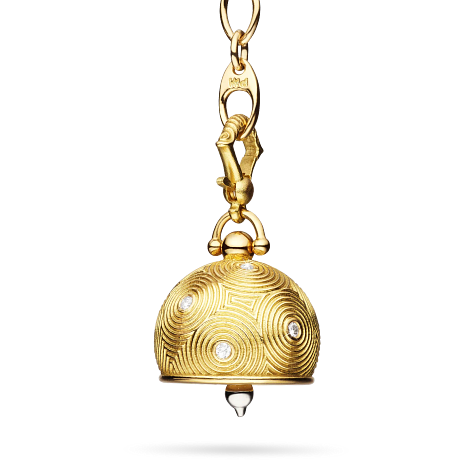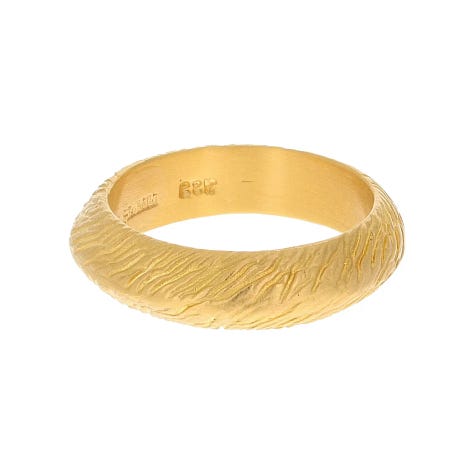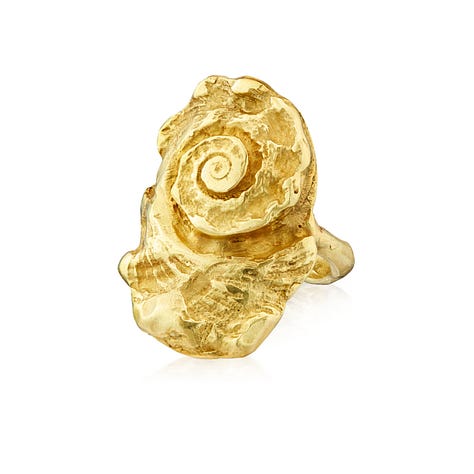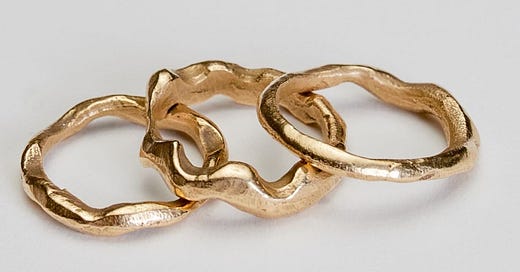Stopping by Bergdorf Goodman to visit my best sparkly "friends," I recently found a fresh case of mixed new and vintage pieces. Sitting front and center was a remarkable layered Munnu necklace (Gem Palace’s retail line). I’m not sure of Neil’s exact title at BG, but he helps me peruse the cases from time to time—he’s one of the most knowledgeable and enthusiastic jewelry salespeople I’ve met in years. He really loves his stuff. We got to chatting about the unwavering commitment to craftsmanship in Gem Palace pieces, particularly when it comes to working with texture. That conversation really got my brain spinning on how critical—and underappreciated—the skill behind creating texture is in jewelry making.
While I was apprenticing, my mentor was hyper focused on finish. She drilled it into me that a piece wasn’t complete until it was properly finished—sanded, polished, and cleaned to perfection. A polished finish had to be a mirror, free of any scratches. Planes had to be symmetrical, with no trace of the hand. I still hear, It’s not finished! ringing in my ears all these years later. It was frustrating, but eventually I learned how to polish perfectly, and with that came an understanding of just how essential it is. For a piece to feel properly precious, it must be flawless. The smallest bump or scratch diminishes its value—and I don’t just mean its price tag.
But as I experimented with texture, I realized my ideas about perfection were wrong as often as it was right. Sometimes, the beauty comes from a hand trained for a decade to make a single, perfectly placed mark (e.g., Buccellati—more on this later). Other times, the beauty is in the perfectly imperfect hammer ping, slightly unintentional, a little off. A fine-grained roughness versus a hammered finish versus a plain high polish can alter the entire mood of a piece, change the way light catches it, and completely transform its mood. The appeal of texture is as much about how a piece feels as how it looks—it has everything to do with how it sits on the body. A bumpy, repeated texture will fall differently around the neck than something smooth. A matte-finished ring will slowly polish over time, inching closer to a satin as it’s worn.
Old or new, satin, high polish, hammered, engraved. Texture to me is one of the most important deciding factors when assessing preciousness, how you’ll wear something or how it will fit into your collection.
FINISH
High Polish. The gold standard for most jewelry. A perfectly smooth, mirror-like surface. The process involves sanding with rough grit sandpaper, progressing to finer grits, then moving to finishing wheels, a tumbler (a bowl filled with shot and liquid that spins to create a surface texture), and finally polishing compounds.
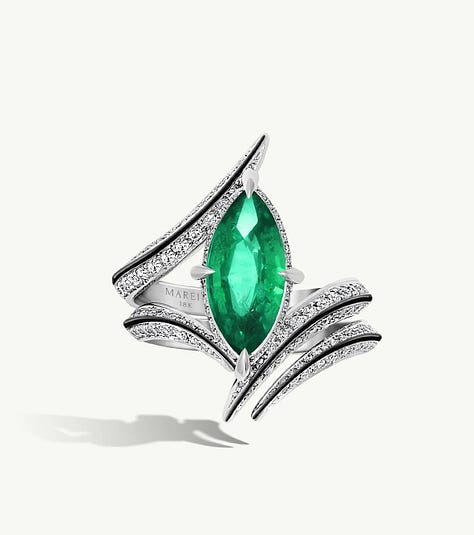
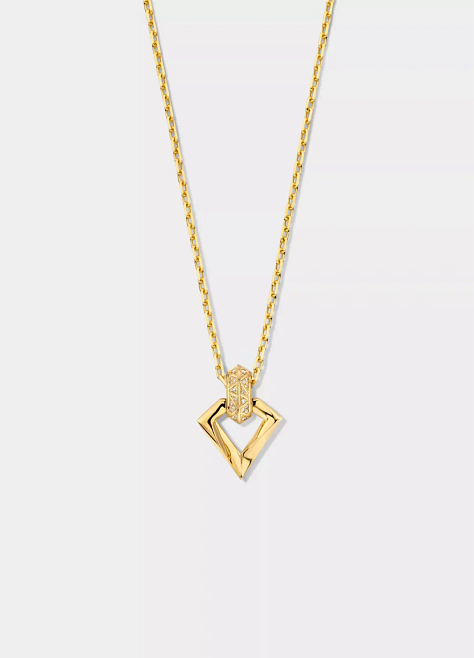

Satin. I’m very happy we’re starting to see more on the market—I’m a big fan. Satin looks much like the jewelry you’re probably wearing right now if it started out as high-polish. Gleaming surfaces will naturally turn satin over time as oils, grit and the daily wear of life creates countless tiny scratches, leading to a softened, more muted surface. The look is intentionally achieved with brushes done by hand or using a tumbling machine.
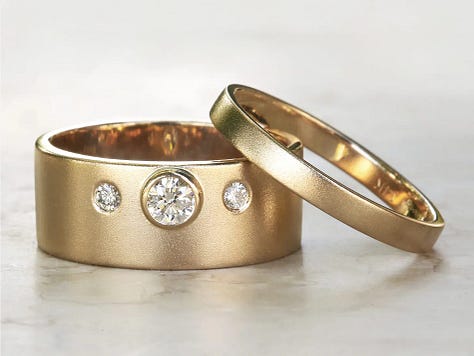
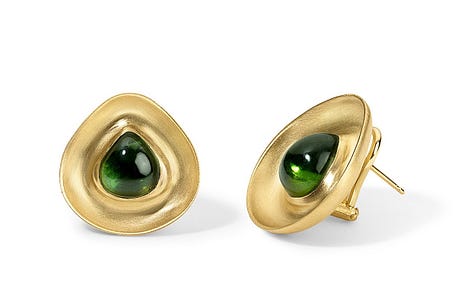
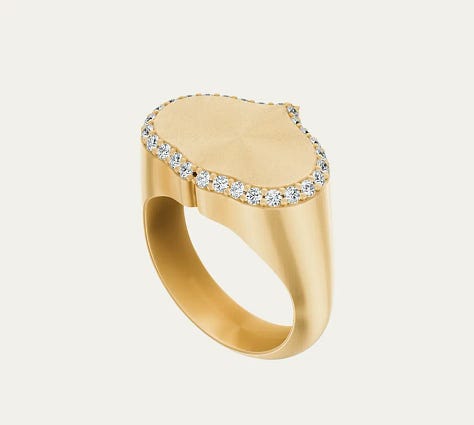
Matte. These days, nearly as common as high-polish. The process is similar, but after applying polishing compounds, a jeweler goes back in with a brush on a flex shaft to add the desired texture.
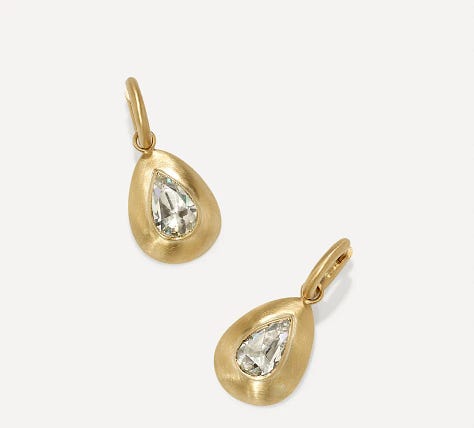

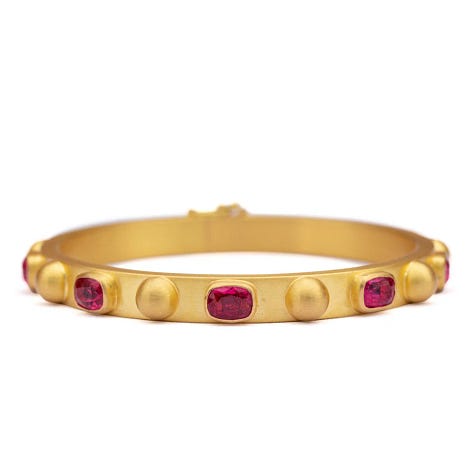
Brushed and Sandblasted. Brushed finishes create a deep matte effect, with fine lines from the brushing process visible along the metal’s surface. Sandblasting, on the other hand, results in a softer matte texture, resembling a fine pebbled surface.
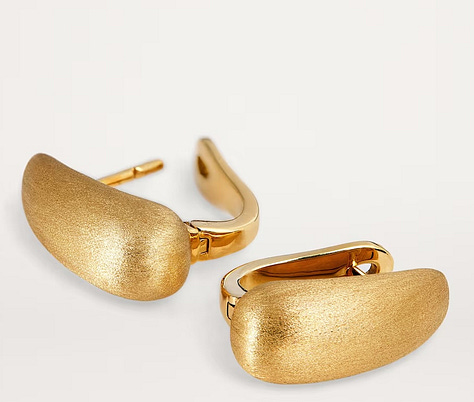
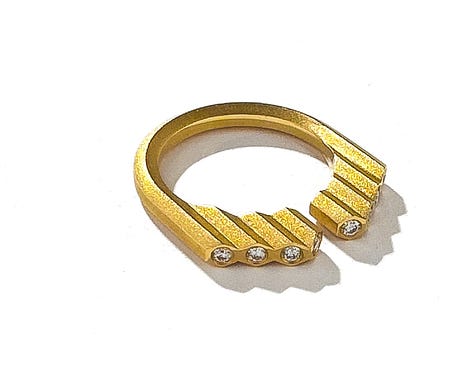

TEXTURE
Engraved. Commonly, engraving takes many forms, from script to imagery. I’m more interested in engraved textures, as they produce some of the most fascinating finishes. From precise line work to intricate patterns, engraving introduces an entirely different dimension :) to texture. The satin texture of this Buccellati cuff (the rigato technique, see below) is actually created by zillions of tiny strokes. The intentionality of such a process really gets me.
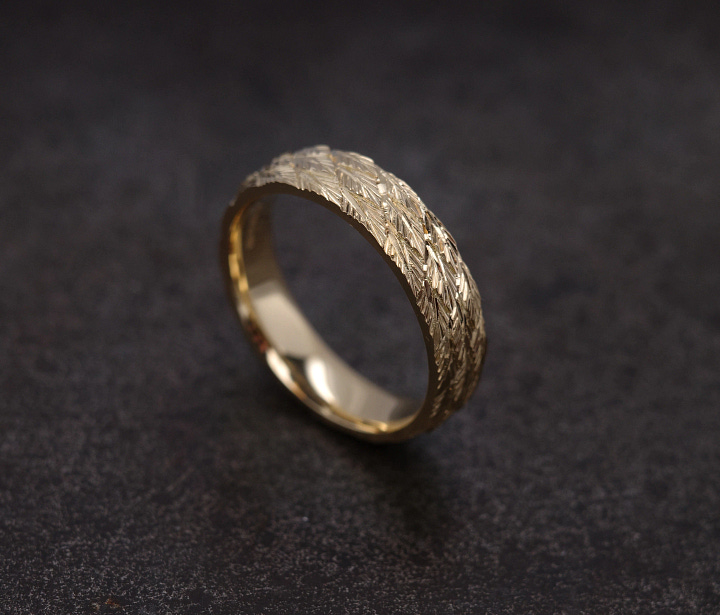
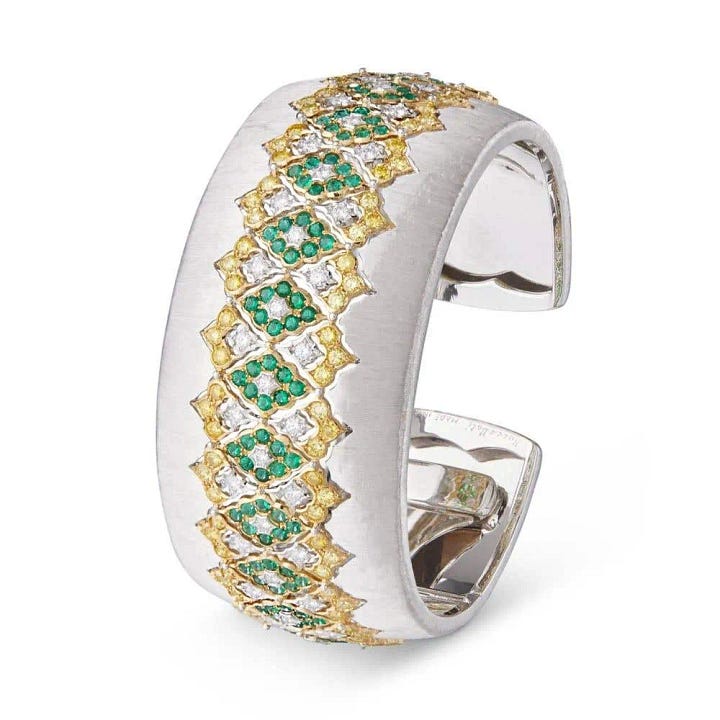
Engraved plates by Buccellati showing different techniques they incorporate in many pieces.




Hammered. Small hammer marks or bold, dramatic ones—I love it all. Different hammers will leave different indentations, more force will leave different depth. In my view, a hammered finish is the most underutilized, and the possibilities are endless.
For over a decade, Salvatore Ambrosino of L’Arte Nascosta has been working with revered artisan Paolo Penko to create exquisite pieces using classic Firenze techniques such as penkatura, cosoro (hammered like the signet rings), and bugnato (a rusticated finish inspired by Florentine architecture). Nobody outside of Florence produces pieces just this way, which Sal will beautifully explain to you here. The legendary craftsmanship of the these Italians is a whole other story in itself—when we get there.
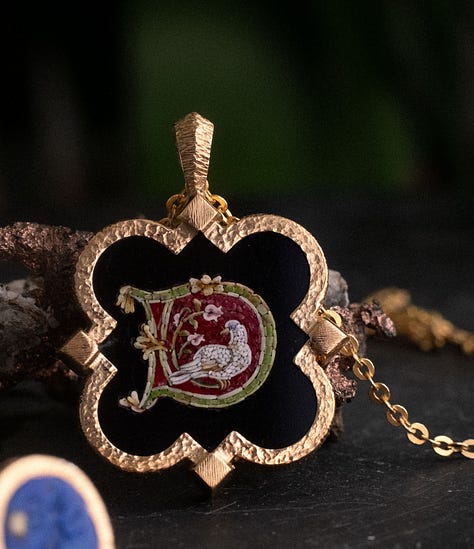
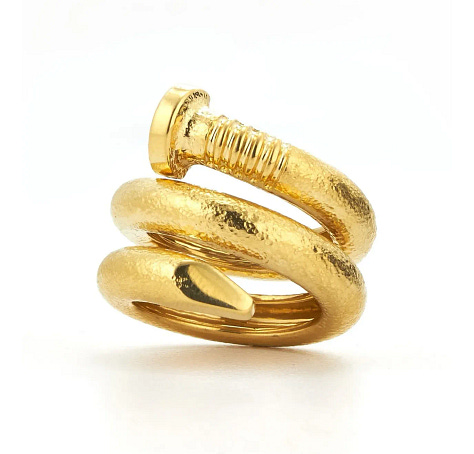
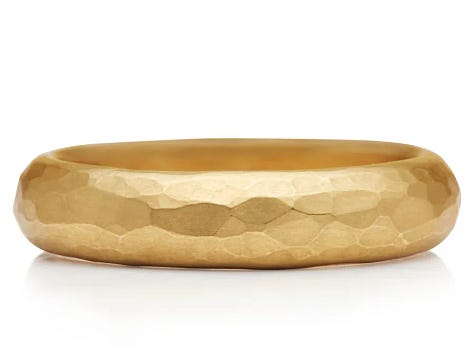
Design, Pattern, Layering. Texture can also be created in the design itself by layering depths and patterns. This can be done (similar to the designs shown below) in a few different ways. A rolling mill takes a master sheet with your pattern (etched, laser cut, 3D printer, or chased). You stack or sandwich a precious metal with the pattern plate and roll it through the rolling mill to impress the design. Precious metal is softer than the master pattern metal, but any metal that’s harder than gold works. With the lost wax technique, once you’ve finished carving the piece, you go back in and carve the design into your model (similarly to how you would engrave a metal ring), then you pour investment (kind of like Plaster of Paris) into a flask. The wax burns out in a kiln overnight, and you’re left with the negative piece inside the investment. The final step is to heat your precious metal until it’s molten and inject it into the flask. This can be done with either vacuum casting (modern) or using a centrifugal casting machine (the old way). There’s also sand casting, (see my rings at top), which leaves behind the fine grit texture if you don’t polish it away.
